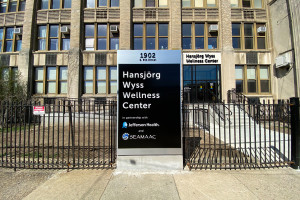Philly Hospitals Don’t Shine in New Federal Government Ratings

iStockphoto.com/vm
The federal government released the first set of its controversial hospital star quality ratings and some highly regarded Philadelphia hospitals didn’t receive glowing marks.
Out of five possible stars, Pennsylvania Hospital and the Hospital of the University of Pennsylvania received three stars, Thomas Jefferson University Hospital, Hahnemann University Hospital, and Temple University Hospital all received two stars, and St. Joseph’s Hospital received one star. According to the Centers for Medicare & Medicaid Services (CMS) who published the findings, the more stars rewarded indicates “better quality care.” A full list of star ratings for Philadelphia area hospitals can be found here.
The affiliated Hospitals of the University of Pennsylvania and Penn Presbyterian (which individually received four stars), and Thomas Jefferson University Hospital all rank in the top 10 best hospitals in Pennsylvania, according to U.S. News & World Report. Penn’s hospital is also ranked number one in the state and region and number nine in the country.
Hospitals just outside of Philadelphia were ranked much better than those in the city. Paoli Hospital was awarded five stars, with Lankenau Medical Center and Bryn Mawr Hospital following with four stars each. Virtua Hospital in Berlin, New Jersey, and Our Lady of Lourdes Medical Center in Camden, New Jersey, also received four stars. The Children’s Hospital of Philadelphia which was recently ranked second in the country for children’s hospitals by U.S. News, was not ranked due to “too few measures reported.”
Hospitals were assessed by the CMS in the areas that they submitted data. Measures that are used to calculate a hospitals rating can include data on readmissions, a patient’s experience, safety, and timely and effective care. According to the CMS, “Specialized and cutting-edge care that certain hospitals provide, such as specialized cancer care, are not reflected in these quality ratings.”
The ratings have been in the works for a while, with research being conducted for at least a year. The CMS claims that hospitals could review their Overall Hospital Quality Star Rating, ask questions, and give feedback during a “dry run” in July and August 2015.” Whether or not the hospitals’ feedback and questions actually changed any ratings is unknown, but the ratings have hurt many of the country’s hospitals.
It’s important to note that because the ratings compare hospitals to each other, it doesn’t mean that a hospital with a 1-star rating will provide poor care. According to the CMS, “It means that hospitals that got 2 or more stars performed better on [a] particular measure of patient experience of care [over another hospital].”
Controversy aside, the CMS says it ultimately wants to help patients and their families learn more about hospital quality and to give them the means to compare hospitals in their area.
As with any list of rankings, however, these should be taken with a grain of salt.


